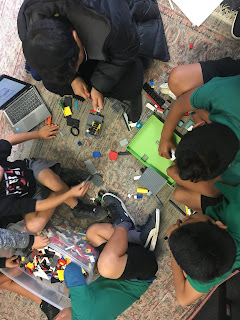Since the beginning of time, games have brought people together. In a world filled with these, coloured boxes, that zone us and our kids out to the world around us, I think, games are so important. They have a magic about them that takes technology and makes it a shared experience.
Game designers are far better at engaging our kids than us teachers, we can't deny that. So it is time we took some hints from these engagement experts.
A tip we can take from game designers is flow theory. When gamers enter a state of flow they lose track of time, and they keep playing for longer and longer. The game is not too challenging and not too easy (sounds a lot like Vygotsky's ZPD, in my opinion).
Something that I'd love to try out, is gamifying a language experience (not technology based), using game mechanics.
The technology based, game design tools I'd like to give a go is Game Froot, as it is created right here is Aotearoa.
As we rethink the learning experiences we design for our kids we have to be aware of...
'CHOCOLATE COVERED BROCCOLI',
looks like a game, sounds like a game but when the kids start playing they realise its just math practice.
And just for the pure joy of playing a game, to bring us and our kids together... Google
Cat On Yer Head... a game for crowds!
























.JPG.jpg)






